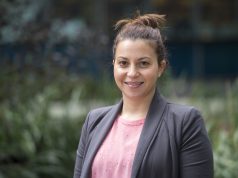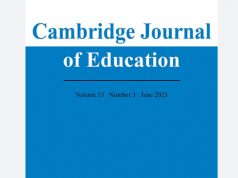With schools experiencing increased linguistic and cultural diversity, how can teachers, students, parents and the wider community work together to improve learning opportunities for students?
Monash’s Melissa Barnes, Katrina Tour and Robyn Babaeff share their insights from their recent collaborative project with Narre Warren P-12 College
This article was originally published in Monash teachspace
With increased migration worldwide, schools are facing growing linguistic and cultural diversity.
In Australia, many schools struggle to address the literacy needs of these students, especially those from refugee backgrounds, due to a lack of time and resources available during the school day.
One way to address this complex educational issue is through school-family-community partnerships.
How school-family-community partnerships work
In school-family-community partnerships, educators, parents and community members collaborate to share information, support students, solve problems and celebrate successes.
In our new program, based in south-east Melbourne, we offered a structure that allowed for reciprocal learning opportunities and provided ways to extend learning beyond the normal hours of the school day.
Primary-aged students, parents, the school community, pre-service teachers, and Monash researchers connected, created and communicated in ways that led to a space where everybody could learn from each other.

A group of 25 parents was a central part of this project.
What our project entailed
| What was involved | What happened in the program | Research insight | |
| parents | Two x 2-hour parent workshops. | A space for parents to discuss how they support their children’s literacy learning. They created visual representations and communicated their experiences based on different learning scenarios. | Teachers need to engage parents in supporting their child’s learning. |
| Students | 25 primary students in Years 3-6 from Language Backgrounds Other Than English. Weekly after-school workshops for 2 terms. | Students connected and communicated with their teachers, parents, and one another through technology. They created podcasts, book trailers, and movies. | Teachers need to use technology to engage students in literacy learning. |
| Pre-service teachers | Four Monash pre-service teachers engaged with both parents and students in the program. | They reflected how they learnt to communicate and connect with parents and students in this linguistically and culturally diverse community. | Teachers need to support future teachers by giving them opportunities for professional learning. |
Engaging parents to support children’s learning
Many parents, especially parents from migrant and refugee backgrounds, can feel uncertain about how to best support their children both inside and outside of school.
In our study, 25 Afghani and Pakistani mothers expressed their frustrations about not having a strong enough grasp of English to help support their child’s literacy learning. However, they made the decision to be actively present in their children’s learning (translated into English from Dari):
“I’m not able to help with my kids’ studies but as a mum I just encourage them.”
“Just my son sits with me and I’m listening to him and I’m encouraging but I don’t understand what he reads and says.”
“Sometimes my son reads in English but I’m going to explain and share my knowledge in Dari.”
“Sometimes my kids are able to retell the story [in Dari]
These parents employed active listening, encouragement, and retelling stories and discussing learning in their home language.
Research suggests that parents’ positive attitude has a strong influence on students’ attitude towards learning.

The project created spaces for parents to discuss how they support their children’s literacy learning.
Using technology to involve students in learning
Victorian Government schools have a diverse student population, with 32% from Language Backgrounds Other Than English (LBOTE).
Research shows teachers struggle to balance job demands, such as curriculum and assessment, while also meeting the needs of students who have limited English language skills.
In light of this, our study harnessed digital technology to extend children’s language and literacy skills outside of the classroom.
Digital Club
With research suggesting that technology can influence students’ engagement and motivation in literacy, the after-school Digital Club, used iPads to engage students in different digital projects.
We also created opportunities to make meaningful connections to students’ home language and created space for them to showcase their digital creations.
Students worked in small groups and individually to create podcasts, book trailers, and movies that they would later share with their parents and the wider school community.
Connecting future teachers with parents and students from diverse backgrounds
Pre-service teachers need professional opportunities to help them expand their skills in recognising and responding to student diversity.
Research shows pre-service teachers are a valuable partner in extending learning for students outside a school community.
Our study found the participating pre-service teachers felt the program gave them increased confidence to work with parents and students from diverse backgrounds. They also gained skills in lesson planning and effectively using technology for meaningful language learning opportunities.

Natalie Nheu was a 4th year education student at Monash University who took part in this program. She says the experience helped her get her first teaching job.

Melissa Barnes co-designed the project as part of her work investigating the ways school-family-partnerships can strengthen learning.
Practical ways teachers can connect, communicate and create
1. Run workshops and information sessions for parents
These can help parents understand how best to support their child’s learning. Invite translators to attend. In these sessions, you can:
- Encourage parents to ask their children to explain and discuss their learning in their home language.
- Keep a bilingual dictionary for use at home.
- Read to them in their home language.
- Encourage them to see learning as something beyond homework, e.g. go to museums, watch documentaries.
2. Encourage parents to be involved in their child’s learning
Invite parents to view their child’s schoolwork and for the child to communicate their learning in different ways:
- Encourage opportunities for children to present their work in both languages.
- Invite parents in the classroom so that their child can explain and show them what they are learning.
3. Use technology
Explore using technology to engage in digital projects to extend and create meaningful language and literacy learning opportunities.
4. Mentor future teachers
Provide opportunities for pre-service teachers to extend student learning – it may seem like a lot of work but you play a key role in mentoring our future teachers.

Fizza Ali is a 4th year student at Monash Education who took part in this program.
Resources
Digital Literacies: EAL Teachers’ Guide.
References
Epstein, J.L. (2011). School, Family, and Community Partnerships: Preparing Educators and Improving Schools (2nd Ed). New York, NY: Routledge.
Gustad, A.R. (2014). The Impact of Technology Tools on Literacy Motivation on Elementary School English Language Learners: Podcasting in a 4th Grade EAL Class. The International Schools Journal, 34 (1).
McFarland, L. & Fenton, A. (2017). Why it matters to transform parent involvement from early childhood to primary school. The Conversation.
Mergler, A.G. & Spooner-Lane, R. (2012). What Pre-service Teachers need to know to be Effective at Values- based Education. Australian Journal of Teacher Education.
Miller, J. (2011). Teachers’ work in culturally and linguistically diverse schools. Teachers and Teaching.
Miller, J., Kostogriz, A. & Gearon, M. (Eds.). (2009) Culturally and Linguistically Diverse Classrooms: New Dilemmas for Teachers. Bristol UK, Buffalo NY, Multilingual Matters.
Moè, A., Katz, I. & Alesi, M. (2018). Scaffolding for motivation by parents, and child homework motivations and emotions: Effects of a training programme. British Journal of Educational Psychology.
Naidoo, L. (2009). Developing social inclusion through after‐school homework tutoring: a study of African refugee students in Greater Western Sydney. British Journal of Sociology of Education.
Pearson. (2019). Meeting the literacy needs of EAL/D students: tips and techniques for teachers.
Topor, D.R. Keane, S.P., Shelton, T.L. & Calkins, S.D. Calkins. (2010). Parent Involvement and Student Academic Performance: A Multiple Mediational Analysis. Journal of Prevention & Intervention in the Community.
State Government Victoria, Department of Education and Training. (2019). EAL Learners in mainstream schools.
Windle, J. & Miller, J. (2012) Approaches to teaching low literacy refugee-background students.







